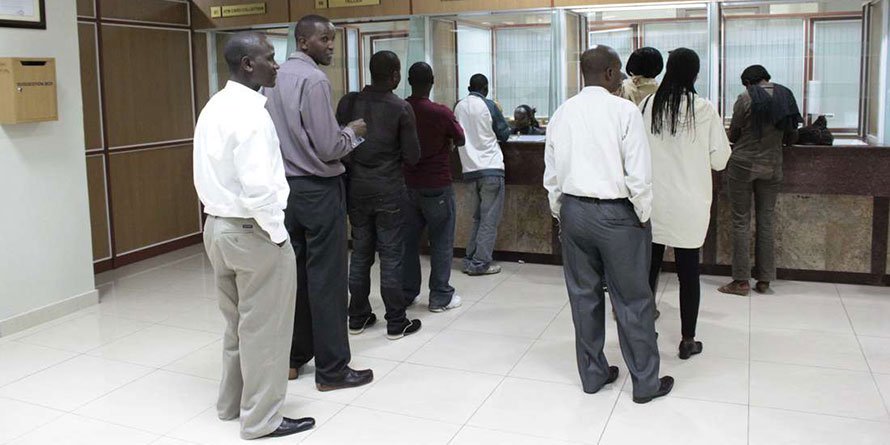Customers wait to be served at a banking hall in Nairobi. FILE PHOTO | NMG Kenyan banks’ non-performing loans (NPL) ratio is projected to rise to almost 14 percent by end of the year with small businesses at greatest risk of default.
This will further dent the banking sector profitability that has already been hit by higher provisioning for bad loans.
Global ratings agency Moody’s says, in a new brief on Kenya’s banking system, that while policy mandated loan payment deferrals and rescheduling have reduced repayment stress this year and slowed down NPL formation, the expiry of these measures in 2021 will likely see faster growth in bad loans.
Latest banking sector data from the Central Bank of Kenya (CBK) shows that the ratio of NPLs to gross loans stood at 13.1 percent in June, having climbed from 12.5 percent in March, when Kenya recorded her first Covid-19 case, and containment measures announced.
CBK said the NPL increases were noted in the manufacturing, trade and personal sectors, due to a subdued business environment.
“We expect non-performing loans to continue to rise from their already high level, nearing 14 percent by the end of 2020, from 12 percent at the end of 2019, with the risk of a sharper increase next year,” said Moody’s in their sector report released Tuesday.
“Kenyan banks’ profitability faces headwinds from rising loan-loss provisioning costs this year…we expect Kenyan banks’ return on assets (ROA) to drop towards two percent over the next 12-18 months, compared to historical levels that have typically been above three percent.”
However, Moody’s said that despite the hit on profits, the lenders will still make enough returns to absorb higher provisioning charges without an impact on capital.
“Kenyan banks have strong capital buffers backed by solid earnings power. Capital will remain robust due to modest loan growth and dividend suspensions, although capital may slip at some banks due to rising problem loans and the related increase in risk-weighted assets,” Moody’s said.
The top seven lenders listed on the Nairobi Securities Exchange set aside Sh31.7 billion in the half-year ended June for the expected increase in bad loans.
